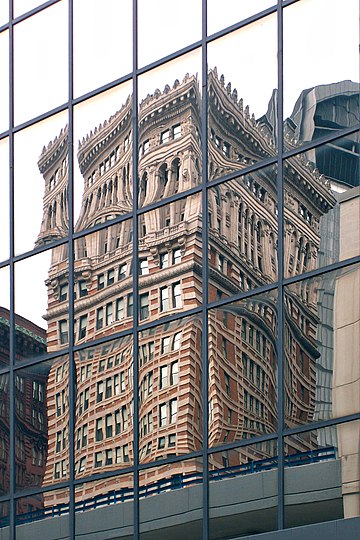
The wonderfully elaborate top of the Arrott Building reflected in the Patterson Building.

Fourth Avenue has a denser population of lions than anywhere else in Pittsburgh, and possibly anywhere else in North America.


Like many invasive species, Oriental Bittersweet came here because it was beautiful. Its berries make a lively splash of color in the winter, especially against a backdrop of evergreens. This vine was growing at the edge of the woods in Bethel Park.


One of the most pleasant shopping streets in the South Hills, Potomac Avenue has a remarkable variety of things to do in a short space. There are coffeehouses, restaurants, an undivided neighborhood movie palace still showing movies, a wine shop, a bakery, a bookstore, a large and well-stocked Turkish-Russian grocery, an oriental-rug dealer, and a streetcar stop on the Red Line (Potomac) that makes it all accessible.
The old Dormont Presbyterian Church (now North Way Christian Community) dominates the street in just the right way.


A winter view from the Mellon Institute. This is a high-dynamic-range picture made from three separate photographs, which helps preserve the detail in the shadows as well as the sunlight.

In his earlier career, Frederick Osterling carved out a niche for himself providing Richardsonian Romanesque buildings for people who couldn’t get Richardson (because Richardson was dead). The Allegheny County Courthouse created a mania for the style in Pittsburgh, and Osterling seems to have had all the work he could handle. In this building from 1892, we see the hallmarks of Osterling’s own variation on the style. He was more florid than Richardson, but he was always aware of the overall composition, never allowing the numerous individual details to break up the carefully orchestrated rhythm of the façade.
Below, we see the Times Building in context, with One Oxford Centre looming in the middle distance.
